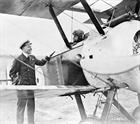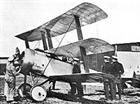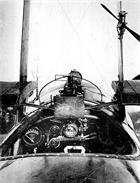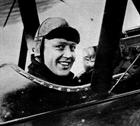On this day 28 May 1916
The first test flight of the prototype Sopwith Triplane was performed on May 26, 1916. Alongside the main Sopwith factory at Kingston upon Thames, aircraft were also manufactured by Clayton & Shuttleworth Ltd and Lincoln Oakley Ltd. It was designed by Sopwith's engineer Herbert Smith.
The first tests were conducted by the No.1 Squadron RNAS in June 1916 and followed by minor design improvements. Full rearmament of RNAS squadrons was finished by the end of 1916. Until the middle of 1917 fighters were armed with two Vickers machineguns. The Triplane was successfully employed against balloons and fighters in addition to the escort role. It was popular with RNAS pilots in France because of its rate of climb and manoeuvrability and was flown by 6 RNAS Squadrons.
The Triplane was famously flown by the all-Canadian No. 10 Squadron RNAS "B" Flight, better known as "Black Flight." This flight was commanded by the ace Raymond Collishaw. Their aircraft, named Black Maria, Black Prince, Black George, Black Death and Black Sheep, were distinguishable by their black-painted fins and cowlings. Black Flight claimed 87 German aircraft in three months while equipped with the Triplane. Collishaw himself scored 34 of his eventual 60 victories in the aircraft, making him the top Triplane ace.
Sopwith Triplane, serial number N6307, was flown by John Edward Sharman while serving with No.10 Squadron RNAS. Sharman scored 7 victories (of his total of 8) flying this aircraft, and rose to command of "C" Flight, before being killed in action in N6307 on 22 July 1917.







